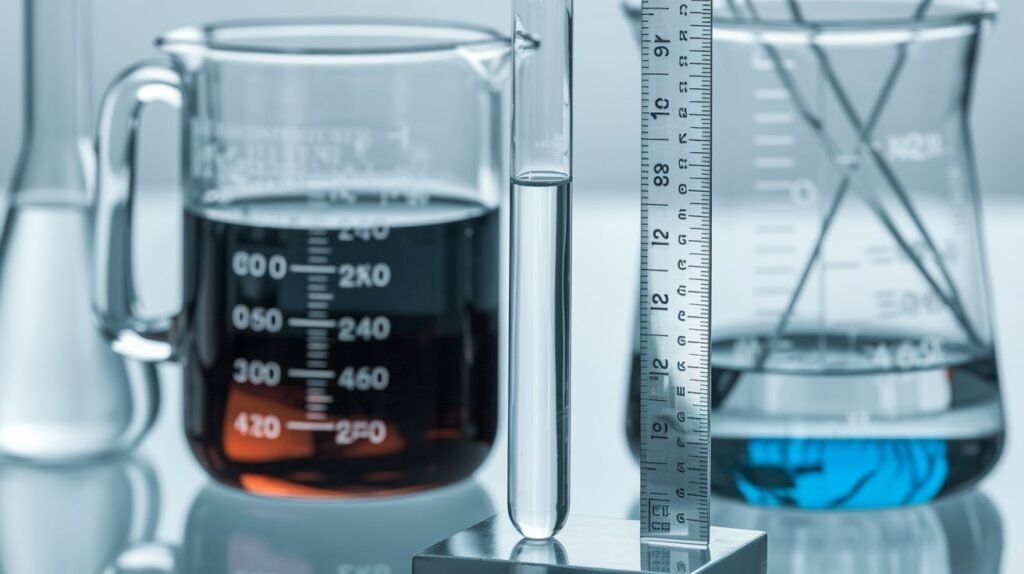CH₂=CH₂: What Is It and Why Is It So Important in Chemistry

CH₂=CH₂ is a tiny molecule with a big job in science! This simple chemical formula stands for ethene, also called ethylene, and it’s one of the most important building blocks in the world of chemistry.
Even though CH₂=CH₂ looks small, it helps make plastics, grow fruits, and even keeps our factories running. In this blog, we’ll explore what CH₂=CH₂ really is, where it comes from, and how it changes the world around us in ways you’d never expect!
Table of Contents
What Does CH₂=CH₂ Mean? A Simple Look at Ethene
CH₂=CH₂ is the chemical formula for ethene, a gas that plays a huge role in science and industry. Ethene is also known as ethylene, a term you might see on chemical labels. This small molecule is made up of two carbon atoms and four hydrogen atoms, joined by a special type of bond called a double bond.
The double bond in CH₂=CH₂ is what makes it special. It allows the molecule to react easily with other chemicals, making it very useful. Scientists often describe ethene as a “reactive molecule,” meaning it’s always ready to combine with other substances to form something new.
Ethene is also one of the simplest hydrocarbons, which are chemicals made only of carbon and hydrogen. Because it’s so simple, it’s often called a building block for bigger and more complex materials.
Why CH₂=CH₂ Is Called a “Building Block” in Chemistry
You might wonder why CH₂=CH₂ is called a building block. The answer lies in its ability to create polymers. Polymers are long chains of molecules used to make things like plastics, pipes, and even clothing. Ethene molecules link together to form a substance called polyethylene, the most common plastic in the world.
Without ethene, modern life would be very different. From food packaging to car parts, many everyday items rely on plastics made from CH₂=CH₂. It’s amazing how such a tiny molecule can have such a big impact.
Another reason ethene is so important is that it’s easy to make. Scientists produce ethene by breaking down bigger molecules found in oil or natural gas. This process, called cracking, helps turn natural resources into useful products.
Where Can We Find CH₂=CH₂ in Real Life?
CH₂=CH₂ isn’t just found in labs; it’s everywhere around us! One of the most common uses of ethene is in plastic production. Polyethylene, made from ethene, is used in bags, bottles, and containers. Look around, and you’ll likely spot something that started as ethene.
Another surprising place you’ll find ethene is in plants. Some fruits, like bananas and apples, release ethene gas when they ripen. Farmers even use it to help fruits ripen faster during transport.
Ethene is also used in industries like medicine and textiles. It’s a key ingredient in making products like antifreeze and polyester, showing its versatility in different fields.
CH₂=CH₂ in the Air: Is It Safe or Harmful?
Although CH₂=CH₂ is useful, it can be harmful if released in large amounts. Ethene gas can pollute the air and harm living creatures. Factories that produce or use ethene must take care to reduce emissions to protect the environment.
Ethene is considered safe when handled properly. Workers in industries that use ethene often wear safety gear to avoid breathing in the gas. Proper storage and transportation also help minimize risks.
How to Handle Ethene Safely
- Use protective equipment like masks and gloves.
- Store ethene in sealed containers.
- Ensure proper ventilation in workspaces.
By following these steps, industries can use ethene without putting people or the environment at risk.
How CH₂=CH₂ Helps Us Make Things Like Plastic

CH₂=CH₂ is a key ingredient in making plastics, which are essential in everyday life. When ethene molecules join together, they form long chains of polyethylene, the most common plastic. This plastic is found in countless products, including plastic bags, bottles, and food containers.
The process of turning CH₂=CH₂ into plastic is simple but powerful. It starts with ethene gas, which is heated and pressured until the molecules bond together to form polyethylene. This process is called polymerization. The result is a strong, flexible plastic that can be molded into different shapes.
Polymers made from CH₂=CH₂ have revolutionized industries by providing affordable, durable materials that are lightweight and versatile. Without this process, many products we use every day wouldn’t exist.
CH₂=CH₂ and Plants: The Surprising Link to Ripe Fruits
Did you know that CH₂=CH₂ plays an important role in nature, too? In plants, CH₂=CH₂ is used as a natural ripening agent. When fruits like bananas and tomatoes ripen, they release small amounts of ethene gas. This gas triggers the ripening process, causing the fruit to soften and become sweet.
Farmers even take advantage of this by using ethene gas to ripen fruits in controlled environments. It helps ensure that fruits reach stores at just the right moment, ready to be eaten.
Interestingly, CH₂=CH₂ is not only a gas in plants but also a hormone. It helps plants grow and respond to their surroundings. For example, CH₂=CH₂ can help plants grow toward light and influence flower blooming.
Ways Ethene Is Used to Ripen Fruits
- Controlled exposure in warehouses
- Ethene gas generators for faster ripening
- Used on fruits during shipping
The Science Behind the CH₂=CH₂ Double Bond
The structure of CH₂=CH₂ is what makes it so unique. The double bond between the two carbon atoms is a key feature. This bond means that the two carbon atoms share two pairs of electrons, making the molecule more reactive. This reactivity allows CH₂=CH₂ to easily bond with other molecules and form new compounds.
Understanding the double bond helps scientists control how CH₂=CH₂ is used in industrial processes. Whether it’s turning CH₂=CH₂ into polyethylene or creating other useful products, the double bond is what makes it all possible.
When CH₂=CH₂ reacts with other chemicals, it often leads to the formation of new substances like alcohols, acids, or even plastics. This process is a critical part of chemical reactions and industrial production.
CH₂=CH₂ vs. Other Gases: What Makes It Special?
CH₂=CH₂ might seem like just another gas, but it stands out in many ways. Unlike other gases, such as oxygen or nitrogen, CH₂=CH₂ has unique properties that make it valuable. For example, it can easily form bonds with other molecules, making it a powerful tool in chemical reactions.
Another reason CH₂=CH₂ is special is that it is a highly reactive gas. While gases like nitrogen are stable and don’t react easily, ethene can quickly combine with other molecules to form new substances. This makes it a versatile molecule in both nature and industry.
Key Differences Between CH₂=CH₂ and Other Gases
- Reactivity: CH₂=CH₂ reacts easily, unlike stable gases like nitrogen.
- Role in Polymerization: Only CH₂=CH₂ can create polyethylene.
- Uses in Agriculture: Ethene is unique in ripening fruits and promoting plant growth.
Conclusion
In conclusion, CH₂=CH₂, also known as ethene, may look like a small molecule, but it plays a huge role in our daily lives. From making plastics to helping fruits ripen, this little molecule is everywhere. Thanks to its simple structure and reactivity, CH₂=CH₂ is used in many industries and even in nature!
As we move toward the future, CH₂=CH₂ will keep helping us create new materials, eco-friendly plastics, and better ways to live. It’s clear that even though CH₂=CH₂ is small, its impact is big and will continue to grow for years to come.
FAQs
Q: What is CH₂=CH₂?
A: CH₂=CH₂ is the chemical formula for ethene, also known as ethylene. It’s a small gas used in making plastics and ripening fruits.
Q: How is CH₂=CH₂ used in everyday life?
A: CH₂=CH₂ is used to make polyethylene plastic, which is found in items like plastic bags, bottles, and containers.
Q: Is CH₂=CH₂ safe for humans?
A: CH₂=CH₂ is safe when handled properly, but it can be harmful if released in large amounts, so it’s important to use it with care.
Q: Why do fruits release CH₂=CH₂?Q: Why do fruits release CH₂=CH₂?
A: Fruits release CH₂=CH₂ to help them ripen. This gas speeds up the ripening process and makes the fruit soft and sweet.
Q: Can CH₂=CH₂ be used to make other things besides plastics?
A: Yes! CH₂=CH₂ is also used to make other chemicals like antifreeze and polyester, which are used in clothing and other products.




